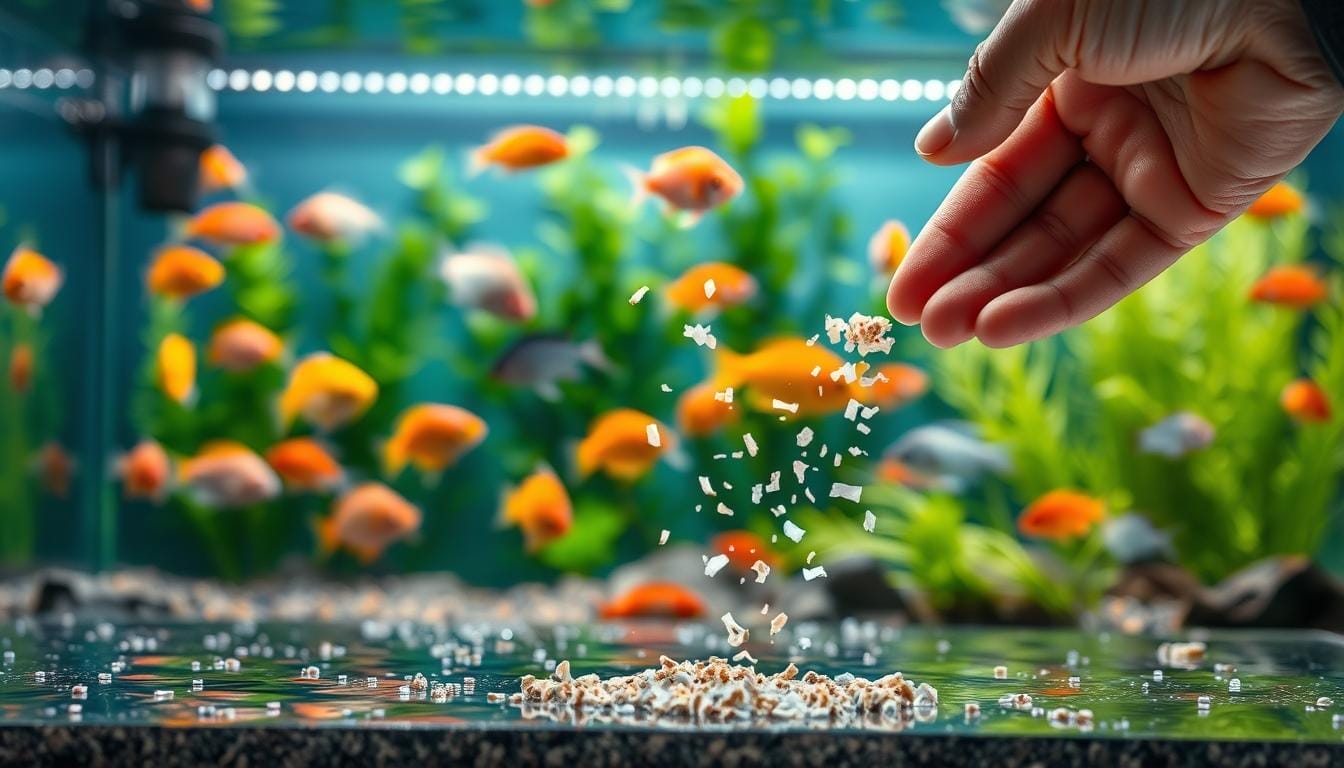
Your Guide to Fish Food Types: Choosing the Right One
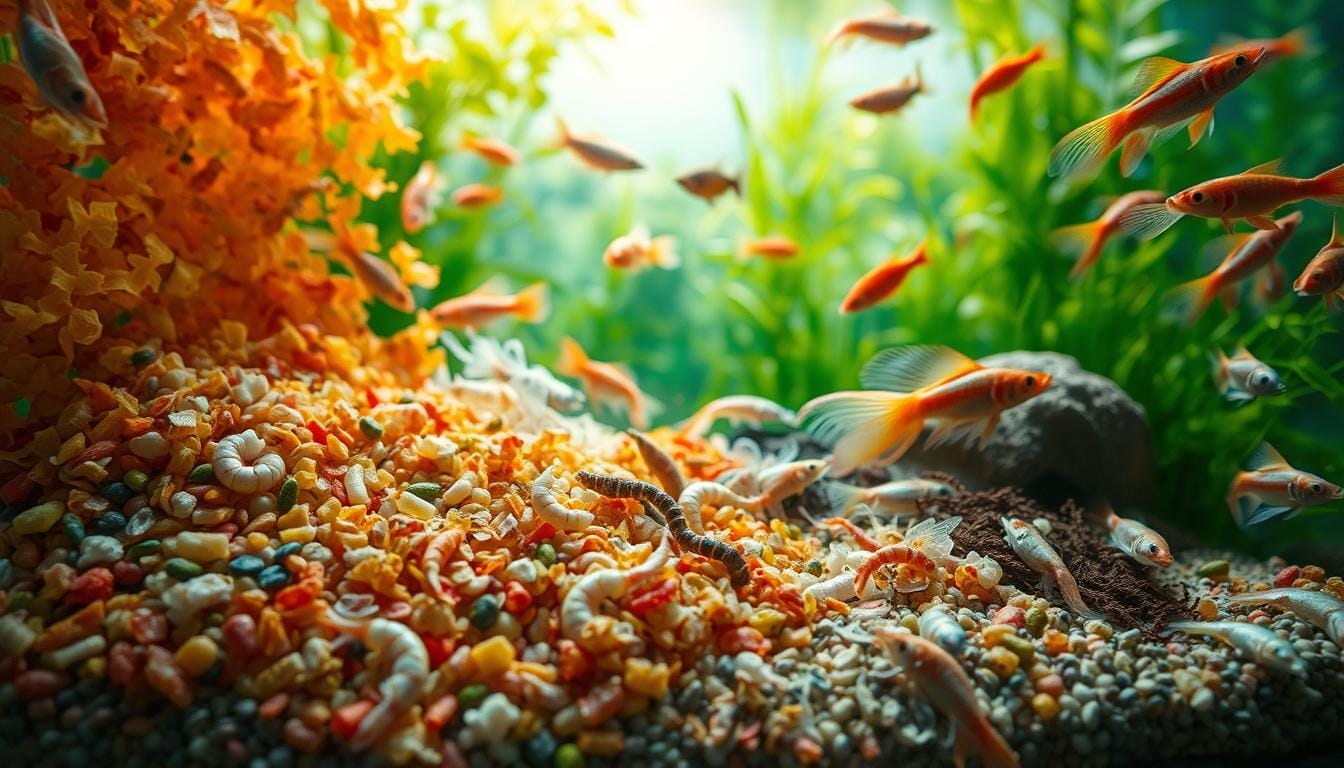
Did you know over 65% of aquarium health issues trace back to improper diets? Many new hobbyists grab the first product with their fish’s photo, only to discover their aquatic friends won’t touch it. Just like humans, underwater creatures have unique tastes and nutritional needs that demand attention.
Choosing the right meal for your aquarium isn’t about price tags or flashy packaging. It’s about understanding what fuels their vibrant colors, energy, and longevity. Some species thrive on plant-based nibbles, while others crave protein-packed bites. Even premium options can fail if they don’t match natural feeding behaviors.
In this guide, you’ll learn how to decode ingredient lists, spot quality nutrients, and pick formats your pets will love. We’ll simplify topics like flakes versus pellets or freeze-dried versus frozen—so you can shop confidently. Your tank’s inhabitants aren’t just pets; they’re family members deserving tailored care.
Ready to transform mealtime from guesswork to success? Let’s dive into creating a menu that keeps your underwater companions thriving.
Understanding Your Aquarium’s Nutritional Landscape
Your aquatic pets’ vibrancy starts with what’s on their menu. Just as tigers don’t graze on grass, marine creatures have distinct dietary requirements shaped by evolution. Three primary groups exist: meat-focused carnivores, plant-loving herbivores, and flexible omnivores. Getting this right means matching meals to biology.
Carnivorous species thrive on 45% protein content—think bloodworms or brine shrimp. Herbivores flourish with 15-30% protein from algae wafers or spirulina. Omnivores need balanced blends. These numbers matter because improper ratios strain organs and dull colors.
Observe wild behaviors for clues. Does your species nibble algae off rocks? Hunt insects at water surfaces? Replicating these patterns reduces stress and supports digestion. A bottom-feeding catfish won’t benefit from floating flakes meant for surface eaters.
Quality ingredients make all the difference. Look for whole proteins like squid meal instead of vague “fish derivatives.” Avoid wheat or soy fillers that offer empty calories. Your tank’s health depends on nutrients that boost immunity and energy—not just filling bellies.
Create this simple checklist when shopping:
- Protein source matches species needs
- First ingredient is recognizable
- No artificial colors or preservatives
Remember: thriving aquariums mirror nature’s pantry. By aligning meals with biology, you’re not just feeding pets—you’re cultivating ecosystems.
An Overview of Fish Food Types and Their Benefits
Imagine your aquarium thriving with energy as inhabitants dart toward meals tailored to their needs. Modern aquatic nutrition offers more choices than ever, each designed to support specific health benefits and feeding behaviors.
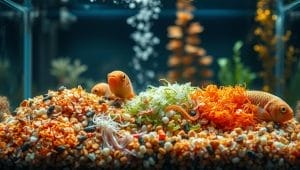
Building a Balanced Menu
Aquatic creatures evolved to consume diverse meals in nature—algae grazers snack throughout the day, while predators hunt protein-rich prey. Replicating this variety prevents nutritional gaps that weaken immune systems. Even meat-loving species benefit from occasional plant fibers for digestion.
Consider these six core categories:
- Flakes & pellets: Ideal for surface feeders
- Gel formulas: Mimic natural textures
- Algae wafers: Sustain bottom dwellers
- Freeze-dried treats: Concentrated nutrients
- Veggie clips: Fresh greens for grazers
- Color-enhancing blends: Boost vibrant hues
Rotating through these options ensures your pets receive complete nutrition. A carnivore’s menu might combine shrimp pellets with weekly vegetable supplements, while herbivores gain strength from spirulina-enhanced wafers plus occasional insect larvae.
Remember: variety isn’t just enjoyable—it’s essential. No single product provides all vitamins, minerals, and proteins required for longevity. By mixing formats and ingredients, you create meals that satisfy instincts and promote vitality.
Mastering Dry, Prepared, and Freeze-Dried Options
Your aquarium’s success hinges on selecting formats that match natural feeding behaviors. Dry and preserved meals offer convenience without compromising nutrition when chosen wisely.
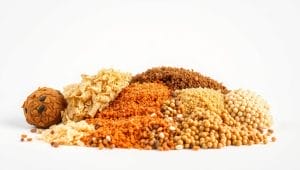
Flake Foods, Pellets, Wafers & Sticks
Flakes work like multi-level feeders. They float briefly before sinking, letting surface swimmers and mid-water explorers grab bites. Crush them into powder for tiny mouths, but remember: they vanish in under two minutes. Slow eaters might miss out.
Pellets solve this with targeted delivery. Choose from three types:
- Floating: Perfect for bettas and gouramis
- Slow-sinking: Caters to middle-depth species
- Heavy-duty sinkers: Reaches bottom dwellers
Wafers stick to glass or sink completely, dissolving over hours. Ideal for nocturnal grazers like plecos who nibble through the night.
Freeze-Dried Foods: Benefits and Best Uses
These protein-packed cubes preserve nutrients better than heat processing. Bloodworms and daphnia retain their shape, triggering hunting instincts. Soak them briefly to rehydrate—your pets get wild-caught energy without parasites.
Store all dry meals in airtight containers. Humidity turns crisp flakes into mush. Keep freeze-dried packs in cool, dark spaces to maintain their crunchy texture and nutritional punch.
Mix these options to create engaging mealtimes. Floating pellets for morning feedings, algae wafers at dusk—your tank becomes a dynamic dining ecosystem.
Exploring Frozen and Live Fish Foods
Your aquarium’s menu just got exciting. Frozen and live options bring wild-harvested nutrition straight to your tank, offering benefits processed meals can’t match. These choices spark natural instincts while delivering premium nourishment.
Using Frozen Meals for a Protein Boost
Flash-frozen bloodworms and brine shrimp retain 95% of their original nutrients thanks to rapid freezing. Producers first “gut-load” these creatures with vitamin-packed algae, creating protein-rich meals. Unlike flakes, they sink slowly—perfect for shy bottom-feeders who need time to find dinner.
Thaw cubes in tank water before feeding. This prevents temperature shocks and keeps your aquatic friends safe. Rotate between shrimp, krill, and daphnia to prevent menu boredom and cover all nutritional bases.
Enhancing Natural Feeding with Live Options
Wiggling brine shrimp trigger hunting behaviors that keep pets mentally sharp. Live diets work wonders for breeding pairs—live options boost energy reserves needed for spawning. Hatch baby shrimp easily: store eggs dry, then soak in saltwater under light for 24 hours.
Use live meals 2-3 times weekly alongside frozen varieties. Always rinse them first to remove contaminants. Watch colors intensify as your aquarium thrives on nature’s original fast food!
Specialty Fish Foods and Nutritional Enhancements
What if your aquarium’s health secret lies in everyday veggies and targeted minerals? Many aquatic species thrive when their diet includes fresh vegetables and supplements that mirror wild nutrition. Blanched zucchini becomes a feast for otocinclus catfish, while canned green beans fuel baby pleco growth.
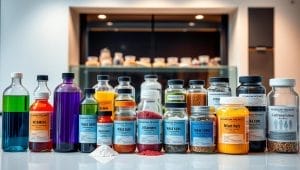
Cherry shrimp glow brighter when fed canned carrots—their natural pigments intensify with beta-carotene. For calcium needs, snails and shrimp benefit from enriched pellets like Hikari Fancy Guppy or Xtreme Shrimpee Sticks. These products strengthen shells and support safe molting.
Decomposing catappa leaves offer hidden benefits. As they break down, they release tannins and grow biofilm—a nutrient-packed buffet for fry and shrimp. Rotate these with algae wafers to mimic natural grazing patterns.
Watch for signs your pets need extra vitamins: faded colors, slow movement, or brittle shells. Limited plants in the tank? Add spirulina powder to their meals twice weekly.
Always blanch veggies first to soften them and remove pesticides. Remove uneaten pieces within four hours to keep water clean. Your thoughtful additions create a balanced ecosystem where every nibble counts!
How to Read and Interpret a Fish Food Label
Cracking the code on aquatic nutrition starts with understanding what’s really in that package. Labels tell a story—if you know how to read them. Let’s turn confusing jargon into actionable insights for your tank’s health.
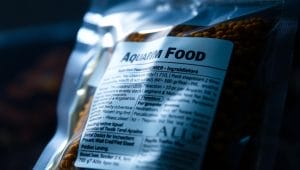
Key Ingredients to Look For
Ingredients appear in order of quantity. For meat-eaters, prioritize specific proteins like shrimp meal or krill over vague terms like “fishmeal.” Carnivores thrive on insect-based formulas, since most don’t naturally eat other fish in the wild. Herbivore blends should list spirulina or kelp first.
Spot quality fishmeal by its source—whole herring or anchovies indicate premium nutrition. Avoid brands using “processing byproducts” or unnamed “marine derivatives.” These often lack essential amino acids.
Understanding Nutrient Percentages and Additives
Aim for at least 40% protein in carnivore diets and 15-25% for plant-eaters. Vitamins C and E are non-negotiable—they’re proven to strengthen immunity. Grains like wheat act as binders but shouldn’t dominate the list.
Watch for these green flags in additives:
- Omega fatty acids for vibrant colors
- Calcium carbonate for shell health
- Natural preservatives (mixed tocopherols)
Want to dive deeper? Our guide to decoding labels breaks down complex terms into simple checklists. You’ll soon shop like a pro, spotting quality food that fuels your aquarium’s best life.
Choosing the Right Food Based on Fish Behavior
Watch your tank come alive when meals align with natural instincts. Aquatic creatures display distinct eating patterns—surface skimmers snatch floating bites, while shy bottom-dwellers forage after dark. Matching these behaviors ensures every inhabitant thrives.
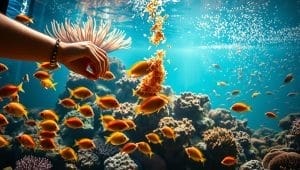
Matching Food Texture and Size to Species
Tiny neon tetras struggle with large pellets, while cichlids ignore crumbled flakes. Goldfish need slow-sinking options to prevent gulping air. For betta fish, choose floating sticks that mimic insect prey.
Follow this simple rule: food should match mouth size. Use micro pellets for small species and chunky wafers for catfish. Observe if meals sink too fast or linger uneaten—this reveals mismatched feeding zones.
Adjusting Feeding Frequency for Optimal Health
Feed most species once or twice daily—2-3 minutes is the golden window. Active hunters like danios burn energy quickly, while lazy goldfish thrive on smaller portions. Always remove leftovers to protect water quality.
Notice fading colors or sluggishness? Reduce portions. Hungry pets scavenging gravel? Offer an extra snack. For detailed guidance, explore this feeding schedule tailored to different species.
Balancing Diets in a Mixed-Species Aquarium
Managing a community tank’s menu feels like hosting a dinner party with picky eaters. Surface-swimming carnivores, algae-munching herbivores, and adaptable omnivores all share space—but their plates need careful customization. Success lies in strategy, not guesswork.
Tailored Feeding for Diverse Needs
Start by serving meals at different tank levels. Floating pellets satisfy top feeders, while sinking wafers reach bottom-dwelling herbivores. Use feeding rings to contain floating options and prevent faster swimmers from stealing all the bites.
Herbivores thrive on 30% plant-based protein from spirulina or blanched veggies. For carnivores, offer frozen brine shrimp in the morning when hunting instincts peak. Omnivores benefit from alternating protein-packed and fiber-rich meals—try gel foods that combine both.
Rotate offerings daily using balanced diet strategies like algae wafers on Monday and bloodworms by Thursday. This prevents nutrient gaps and keeps finicky eaters engaged. Always remove uneaten portions within 15 minutes to maintain water quality.
Monitor growth rates and coloration. If herbivores show faded hues, boost their greens with nutritional supplements containing beta-carotene. Carnivores needing energy? Add vitamin-enriched krill to their weekly menu.
Your mixed tank flourishes when every inhabitant gets their perfect plate. Watch closely, adjust gently, and celebrate those vibrant swirls of activity at mealtime!
FAQ
How do I choose between flakes and pellets for my aquarium?
Flakes work well for surface feeders like tetras or guppies, while sinking pellets better suit bottom-dwellers like corydoras. Match the size to your tank residents’ mouths—crush flakes for small species or use slow-sinking micro pellets for shy eaters.
Are freeze-dried bloodworms safe as a regular meal?
Freeze-dried options like bloodworms or brine shrimp offer concentrated protein but should be soaked before feeding. Use them 2-3 times weekly as a supplement, not a staple, to prevent nutritional gaps in your aquatic pets’ diet.
Can I feed frozen foods to all fish species?
Most tropical species thrive on frozen foods like daphnia or mysis shrimp. Thaw a portion in tank water first, and remove uneaten bits within 2-3 minutes. Avoid overfeeding carnivores like bettas—stick to portion sizes matching their stomach capacity.
What ingredients should I prioritize for herbivorous fish?
Look for spirulina, kelp, or zucchini listed in the first three ingredients. Algae wafers or blanched spinach work well for plecos and silver dollars. Supplement with sinking veggie pellets to support their plant-based digestion needs.
How often should I feed a mixed community tank?
Offer small meals 2-3 times daily, using a mix of floating and sinking formats. Feed omnivores like mollies first with flakes, then add algae wafers for herbivores. Remove uneaten food after 5 minutes to maintain water quality.
Do I need to add vitamins to prepared foods?
High-quality brands like Hikari or Omega One often include essential nutrients. For specialized cases (e.g., breeding fish), lightly dust foods with vitamin supplements weekly. Always store foods in airtight containers to preserve nutrient integrity.
Can goldfish and tropical fish eat the same food?
Goldfish require more plant matter and less protein than most tropical species. Use species-specific formulas—opt for wheat germ-based goldfish pellets and separate tropical blends with higher animal protein for community tank mates.





